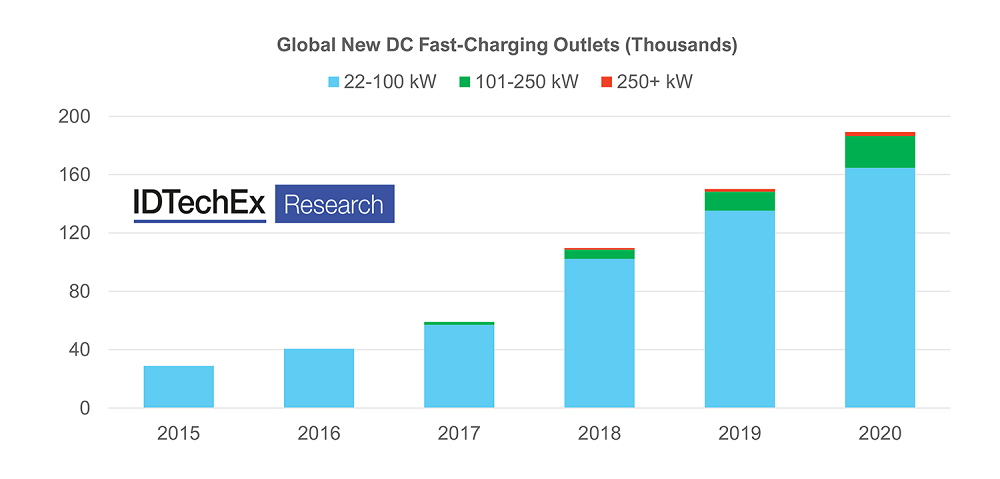- FMA
- The Fabricator
- FABTECH
- Canadian Metalworking
IDTechEx report highlights fast, high-power charging for EVs
- December 15, 2021
- News Release
- Management
IDTechEx has released a new report, “Charging Infrastructure for Electric Vehicles and Fleets 2022-2032,” that explores the costs and footprints associated with high-power chargers, which offer fast charging at a rate of 50 kW.
As EV range and battery capacities increase, there is a greater ability for vehicles to accept higher charge rates. With variants of current battery chemistries and battery pack designs, the time to recharge is expected to be reduced to below approximately 15 minutes to charge to 80%. Corresponding with these general goals, the number of vehicle models that are able to accept higher power is expected to increase in the next several years. However, in the near term, many existing low-range EVs will not be able to take advantage of chargers operating at 350 kW. A mix of charging speeds available at a charging site, controlling power output at a single charger, or sharing power among a group of chargers will usually satisfy the mix of vehicles that arrive with the ability to charge at their maximum power acceptance rate, the company states.
Currently there are major deployments of fast chargers worldwide, often funded by government at the local, regional, or national level. The growth in the number and location of fast chargers has occurred organically or as a result of national plans. However, Level 3 high-power charging makes up only a small fraction of EV charging and requires more expensive hardware and higher utility costs than Level 1 or Level 2 charging in most settings. Distribution lines and the final transformers are the most likely to require an upgrade to accommodate fast chargers, alongside installing separate power cabinets to the charge post itself.
As the number of EVs grows, additional high-power chargers can be added to existing charging stations to address capacity concerns rather than building new stations. Most of these chargers are available in 50-/75-kW step power units that are connected to meet the required power demand and can be scaled up or down based on utilization.
subscribe now


Keep up to date with the latest news, events, and technology for all things metal from our pair of monthly magazines written specifically for Canadian manufacturers!
Start Your Free Subscription- Industry Events
ZEISS Quality Innovation Days 2024
- April 15 - 19, 2024
Tube 2024
- April 15 - 19, 2024
- Düsseldorf, Germany
CTMA Economic Uncertainty: Helping You Navigate Windsor Seminar
- April 30, 2024
- Windsor, ON Canada
MME Winnipeg
- April 30, 2024
- Winnipeg, ON Canada
CTMA Economic Uncertainty: Helping You Navigate Kitchener Seminar
- May 2, 2024
- Kitchener, ON Canada




















